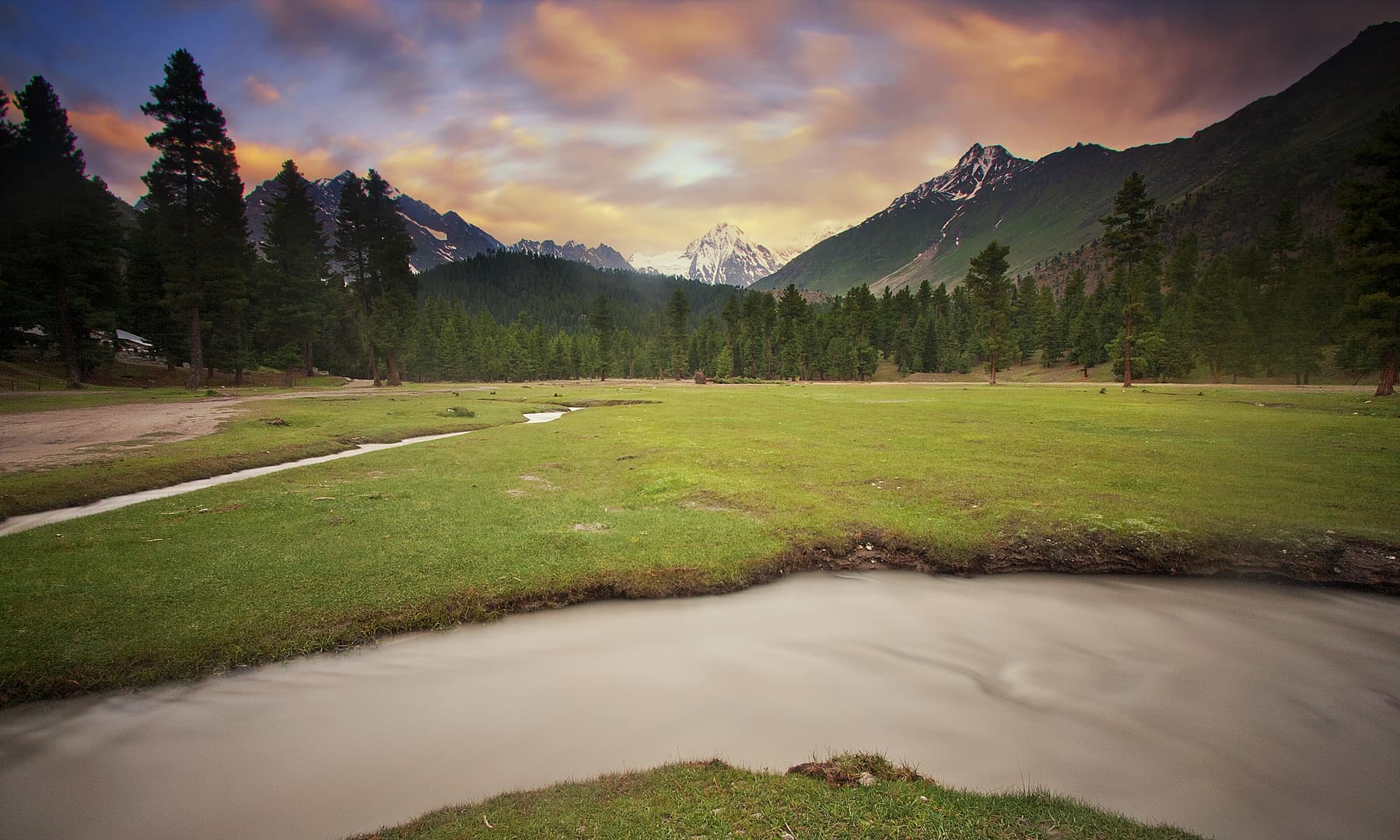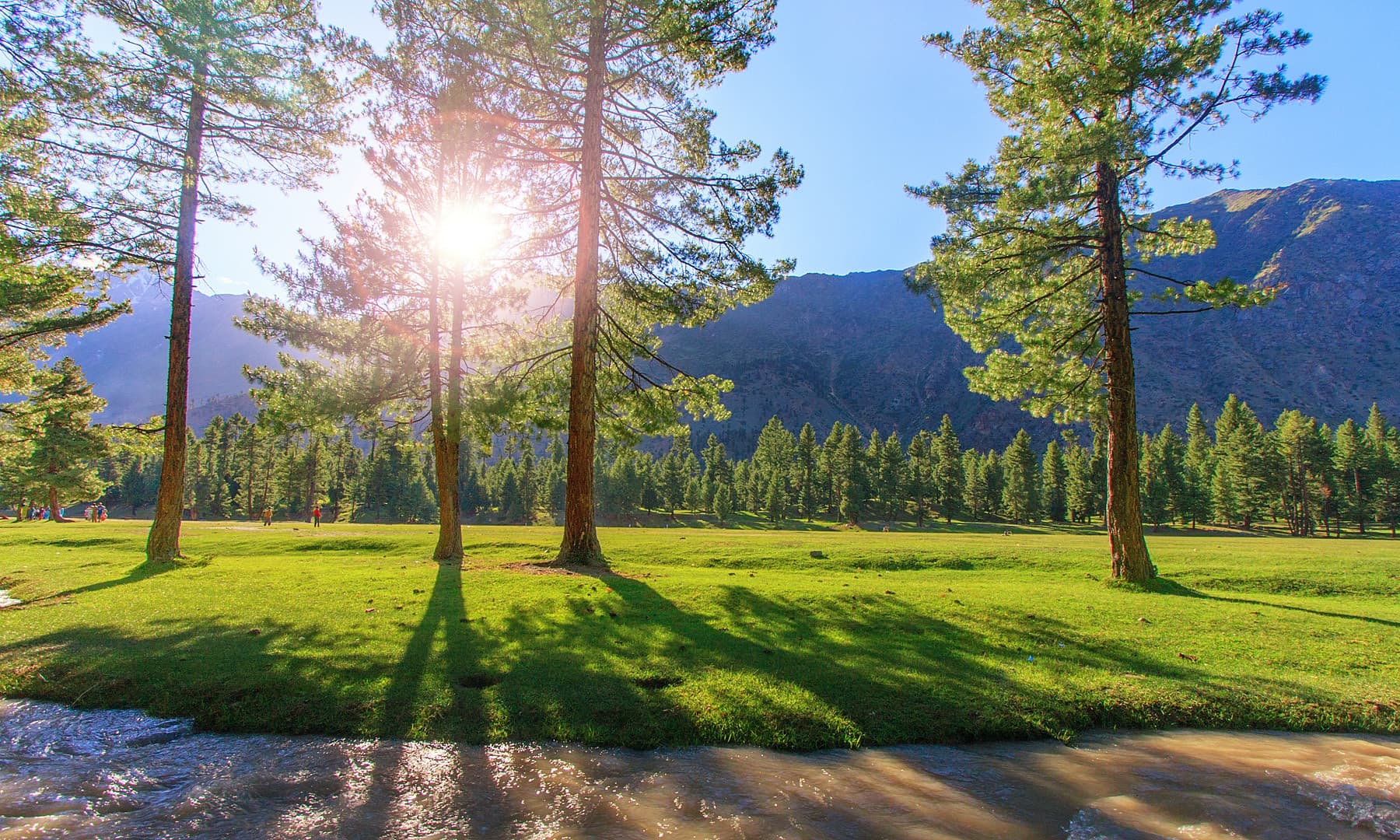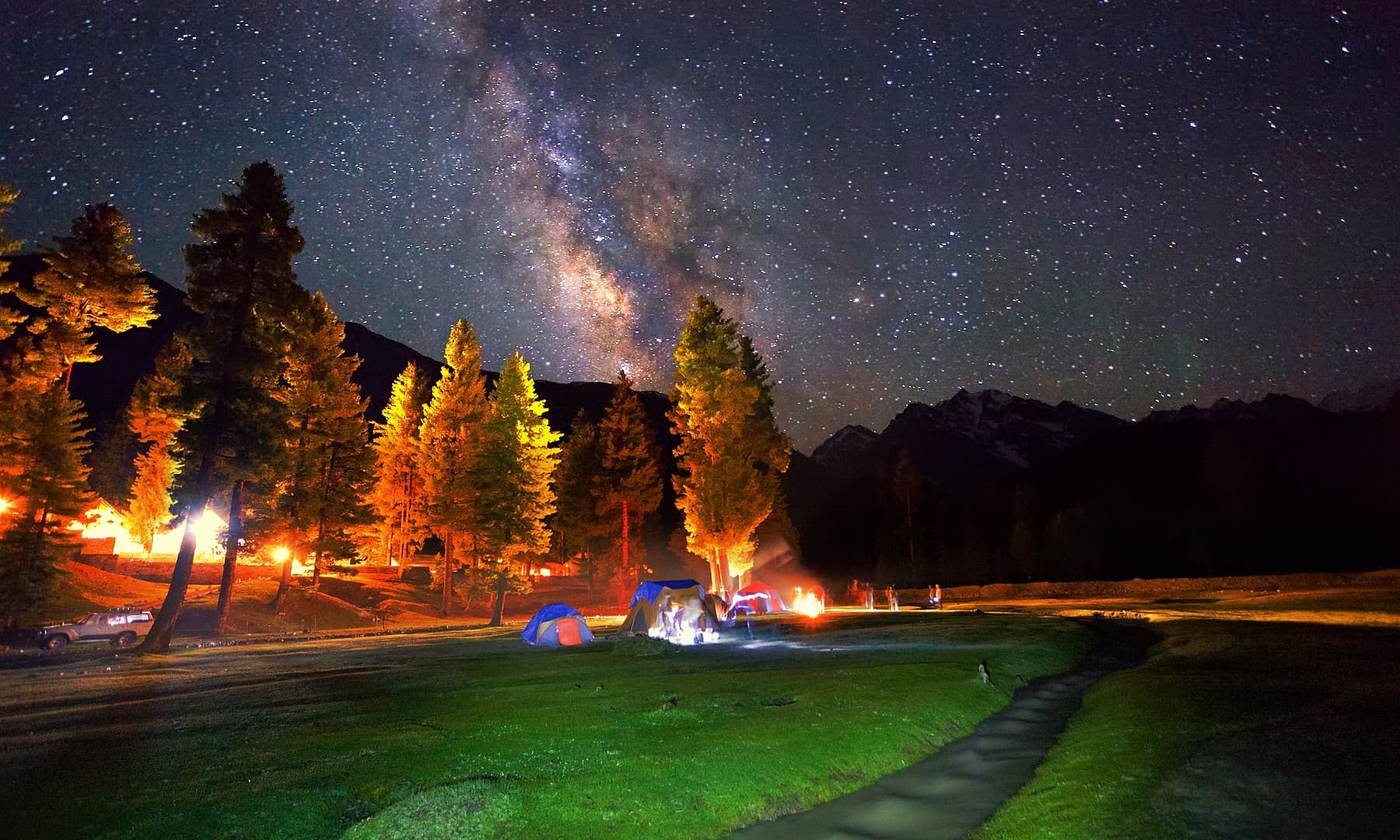How to install the app on iOS
Follow along with the video below to see how to install our site as a web app on your home screen.
Note: This feature may not be available in some browsers.
You are using an out of date browser. It may not display this or other websites correctly.
You should upgrade or use an alternative browser.
You should upgrade or use an alternative browser.
In love with Northern Pakistan
- Thread starter U-571
- Start date
krash
MODERATOR

- Joined
- Jul 28, 2009
- Messages
- 5,885
- Reaction score
- 29
- Country
- Location
Pardon my ignorance but how is Northern Pakistan (Gilgit-Baltistan) part of Pakistan? Isn't this a disputed territory?
The answer to your question in one of your own posts:
Mate, like I said pardon my ignorance. But, according to UN all the territories including Indian controlled Kashmir of erstwhile princely state of J&K are disputed territories. Plus you have a country called Pakistan today, because of the same foreigners.
Btw, Falkland Islands are not recognised as a disputed territory. Argentinians can cry all they want but we won the war and all the inhabitants of these islands have chose to remain part of GB.
As for the red highlighted part, kindly study on the partition. It is only Mr.Jinnah and accidentally Mr.Nehru because of whom we have Pakistan.
Desert Fox
ELITE MEMBER

- Joined
- Jan 16, 2010
- Messages
- 10,584
- Reaction score
- 30
- Country
- Location
Hmm, the ancient Aryan gene pool still exists in Pakistan's Northern region, albeit in the isolated areas.school girls in hunza

It is a part of Pakistan and will always remain so. If anyone wants it they will have to fight for it.Pardon my ignorance but how is Northern Pakistan (Gilgit-Baltistan) part of Pakistan? Isn't this a disputed territory?
DESERT FIGHTER
ELITE MEMBER

- Joined
- Jan 1, 2010
- Messages
- 46,973
- Reaction score
- 95
- Country
- Location
STAFF

- Joined
- May 1, 2015
- Messages
- 3,786
- Reaction score
- 34
- Country
- Location
NOTE:
Thank you for your interest in Wikipedia Loves Northern Pakistan, the Wikipedia photography competition around natural heritage of Pakistan
Wikipedia Loves Northern Pakistan is an online photography competition about natural heritage sites in Pakistan. It is a part of the international annual photographic competition Wiki Loves Earth which start on the 1st May and end on the 31st May 2015.
The aim of month-long international Wiki Loves Earth photography competition is to highlight and promote the natural heritage sites of the participating countries with the goal to encourage people to capture pictures of naturally significant sites, and to put them under a free licence as opposed to traditional copyright which can then be re-used not only on Wikipedia but everywhere by everyone freely. To achieve that, Wiki Loves Earth is annually taking place every September since 2013.
This is the first time Pakistan is participating in the multinational photography competition. So please participate because the world is waiting to see what natural heritage of Pakistan means to you!
Please visit wikipedia site and participate. As I am new, i have yet to be permitted to post link.
Thank you for your interest in Wikipedia Loves Northern Pakistan, the Wikipedia photography competition around natural heritage of Pakistan
Wikipedia Loves Northern Pakistan is an online photography competition about natural heritage sites in Pakistan. It is a part of the international annual photographic competition Wiki Loves Earth which start on the 1st May and end on the 31st May 2015.
The aim of month-long international Wiki Loves Earth photography competition is to highlight and promote the natural heritage sites of the participating countries with the goal to encourage people to capture pictures of naturally significant sites, and to put them under a free licence as opposed to traditional copyright which can then be re-used not only on Wikipedia but everywhere by everyone freely. To achieve that, Wiki Loves Earth is annually taking place every September since 2013.
This is the first time Pakistan is participating in the multinational photography competition. So please participate because the world is waiting to see what natural heritage of Pakistan means to you!
Please visit wikipedia site and participate. As I am new, i have yet to be permitted to post link.
ghazi52
PDF THINK TANK: ANALYST

- Joined
- Mar 21, 2007
- Messages
- 101,742
- Reaction score
- 106
- Country
- Location

Tirich Mir is the highest mountain of the Hindu Kush range, and the highest mountain in the world outside of the Himalayas-Karakoram range, located in Khyber Pakhtunkhwa, Pakistan. The mountain was first climbed in 1950 by a Norwegian expedition consisting of Arne Næss, P. Kvernberg, H. Berg, and Tony Streather. Tirich Mir overlooks Chitral town, and can be easily seen from the main bazaar. It can also be seen from Afghanistan.
height 7708 meter
ghazi52
PDF THINK TANK: ANALYST

- Joined
- Mar 21, 2007
- Messages
- 101,742
- Reaction score
- 106
- Country
- Location
KPK

Abbottabad and Galiyat
Abbottabad is situated 38 miles (61 km) northeast of Rawalpindi. A hill station (4,120 feet [1,256 metres]), it lies on a plateau at the southern corner of the Rash (Orash) Plain and is the gateway to the picturesque Kagan Valley. It is connected by road with the Indus Plain and the Kashmir region and by railhead (at Havelian, 10 miles [16 km] south) with Peshawar. Abbottabad is a district market centre. It was founded in 1853 and named after Maj. James Abbott, the first British deputy commissioner of the region. There are parks, a preparatory school, several colleges affiliated with the University of Peshawar, and a forest research centre. The Pakistan Military Academy is at Kakul, 5 miles (8 km) northeast. Major iron-ore deposits are nearby. With its lush scenery and proximity to the Himalayas and the Karakoram Range, the city is a popular summer resort. Pop. (1998) 106,101.
When to Go
The area of Galiyat has four distinguishable seasons. Spring starts in March and ends in middle of May. Maximum temperature during this period remains 12°C to 20°C and minimum between 4°C to 10°C. The blossom of fruit trees gives spectacular view. Summer season starts from middle of May and ends in late August. This is the best season in the area and it receives most number of visitors during this season. During this time the area also receive heavy monsoon rains. Maximum temperature during this period remains 20°C to 25°C and minimum between 13°C to 16°C. With the advent of September autumn creeps in and last till the starts of winter in the early December. This is the season of clear sky in the region when one can enjoy full view of mountains around without cloud hindrance. Temperatures also remain mild during this period.
Winter season starts in December and normally brings heavy snowfall. During this period the area of Galiyat gets a cover of thick sheet of snow during most part of the season. This is the coldest period in Galiyat and temperature mostly hovers around freezing points.
In which ever seasons you come don’t forget to bring with you enough warm clothes and rain gear as weather of this area is very unpredictable.

Abbottabad and Galiyat
Abbottabad is situated 38 miles (61 km) northeast of Rawalpindi. A hill station (4,120 feet [1,256 metres]), it lies on a plateau at the southern corner of the Rash (Orash) Plain and is the gateway to the picturesque Kagan Valley. It is connected by road with the Indus Plain and the Kashmir region and by railhead (at Havelian, 10 miles [16 km] south) with Peshawar. Abbottabad is a district market centre. It was founded in 1853 and named after Maj. James Abbott, the first British deputy commissioner of the region. There are parks, a preparatory school, several colleges affiliated with the University of Peshawar, and a forest research centre. The Pakistan Military Academy is at Kakul, 5 miles (8 km) northeast. Major iron-ore deposits are nearby. With its lush scenery and proximity to the Himalayas and the Karakoram Range, the city is a popular summer resort. Pop. (1998) 106,101.
When to Go
The area of Galiyat has four distinguishable seasons. Spring starts in March and ends in middle of May. Maximum temperature during this period remains 12°C to 20°C and minimum between 4°C to 10°C. The blossom of fruit trees gives spectacular view. Summer season starts from middle of May and ends in late August. This is the best season in the area and it receives most number of visitors during this season. During this time the area also receive heavy monsoon rains. Maximum temperature during this period remains 20°C to 25°C and minimum between 13°C to 16°C. With the advent of September autumn creeps in and last till the starts of winter in the early December. This is the season of clear sky in the region when one can enjoy full view of mountains around without cloud hindrance. Temperatures also remain mild during this period.
Winter season starts in December and normally brings heavy snowfall. During this period the area of Galiyat gets a cover of thick sheet of snow during most part of the season. This is the coldest period in Galiyat and temperature mostly hovers around freezing points.
In which ever seasons you come don’t forget to bring with you enough warm clothes and rain gear as weather of this area is very unpredictable.
Sulman Badshah
STAFF

- Joined
- Feb 22, 2014
- Messages
- 4,282
- Reaction score
- 34
- Country
- Location
Just to freshen up your minds. Despite of all the doom and gloom around, there's hope and beauty in the universe that is our common home.
Some beautiful snaps taken this morning by Asghar khan in Hunza Valley




Some beautiful snaps taken this morning by Asghar khan in Hunza Valley
Sulman Badshah
STAFF

- Joined
- Feb 22, 2014
- Messages
- 4,282
- Reaction score
- 34
- Country
- Location
Take me back to Nagar
SYED MEHDI BUKHARI

View of Nagar from Hunza at dusk.
Some things are beautiful in their simplicity; others in their intricacy.
In the north of Pakistan lies an absolutely stunning district; Hunza Nagar, previously known as Brushal, this place is a lakeside paradise. Hunza and Nagar used to be separate princely states parted by the River Hunza which marked the border between the two states.
The small states of Hunza and Nagar were notorious for looting trader caravans that would come from China.
The British wanted to expand their trade to Russia from here, but the states wouldn’t allow them to. Thus in 1891, Nagar was invaded by the British Army led by Colonel Durand. British surrounded the Nagar’s Nalt Fort, and eventually seized it six months later.

Frame from Nagar.
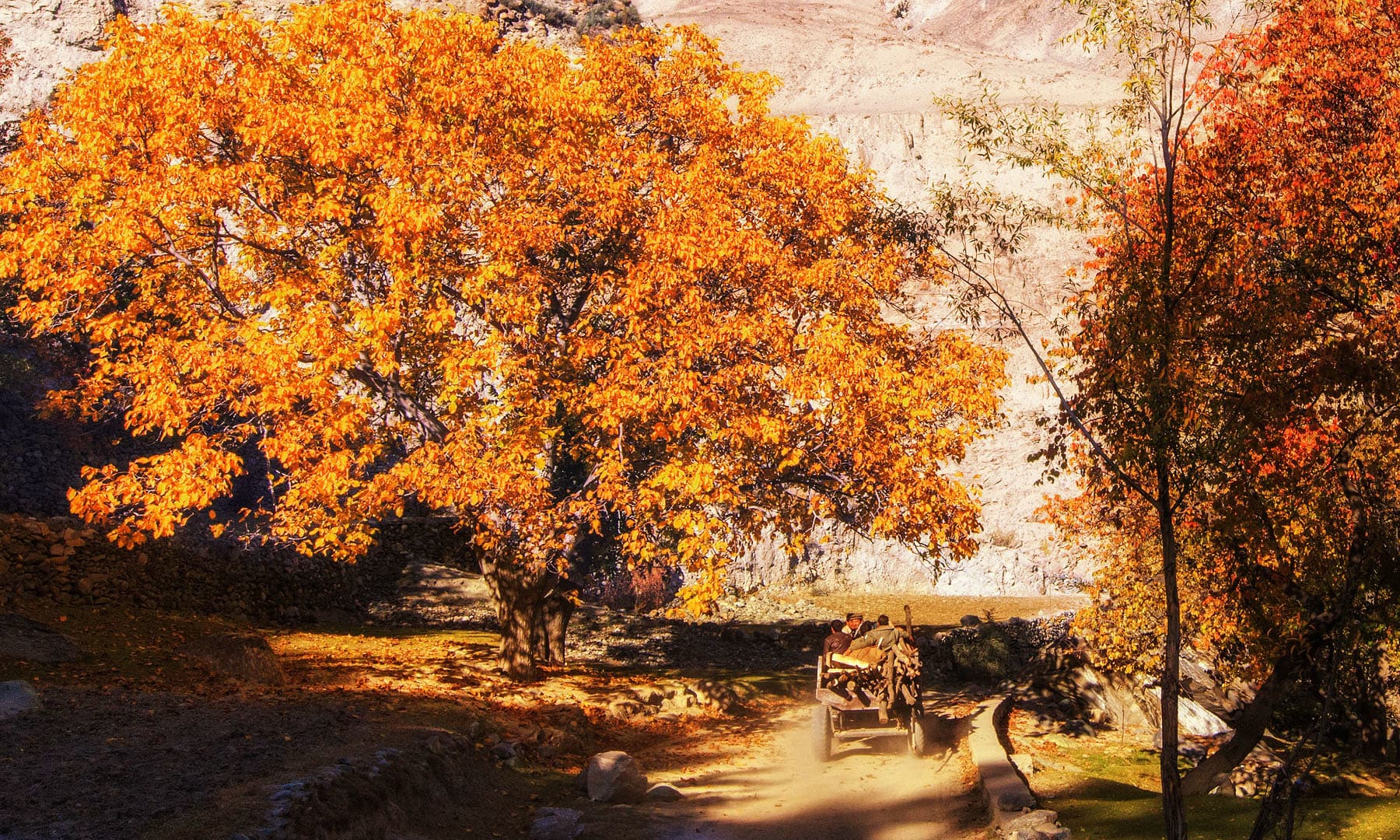
A pathway in Nagar.
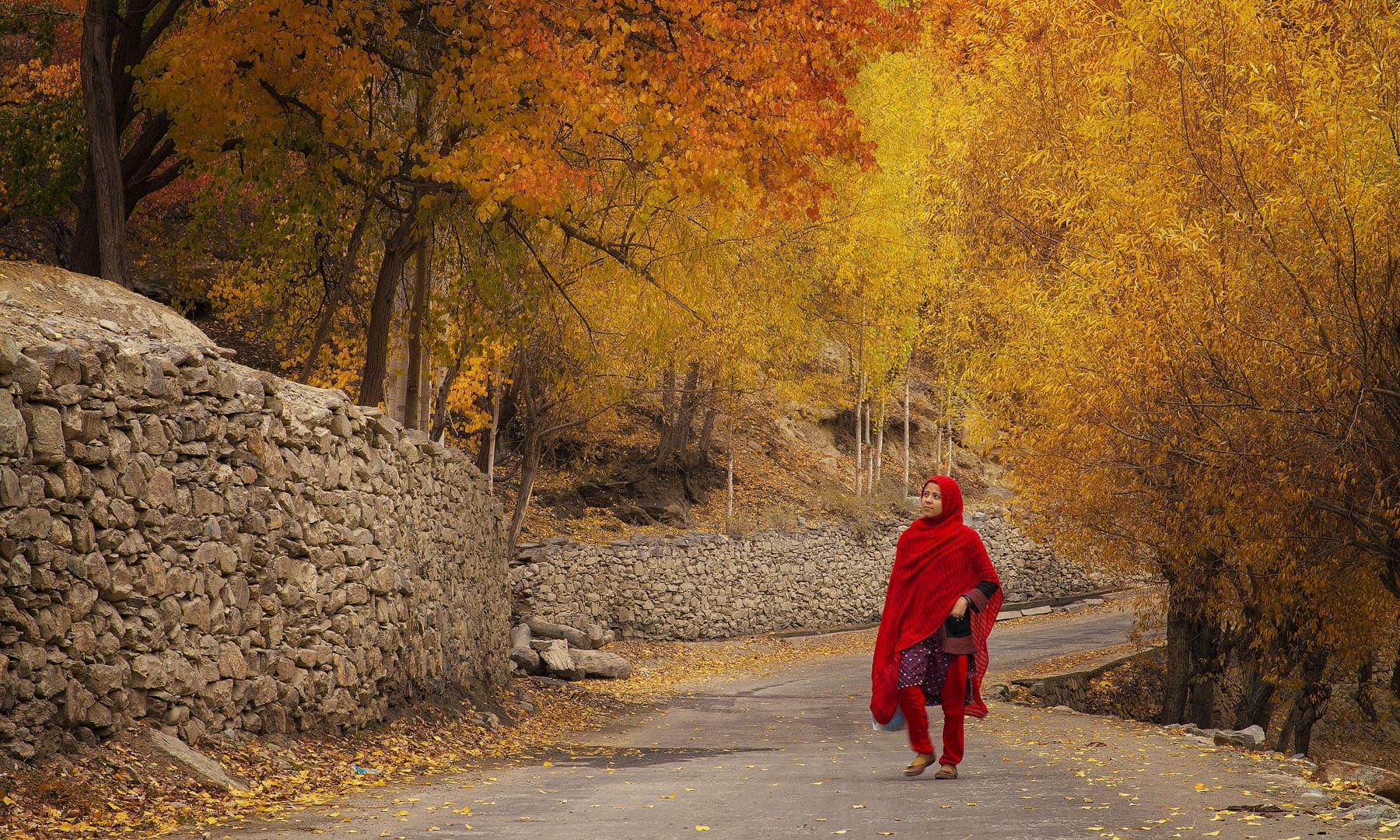
A view of Nagar Khas.

A view of Nagar Khas.
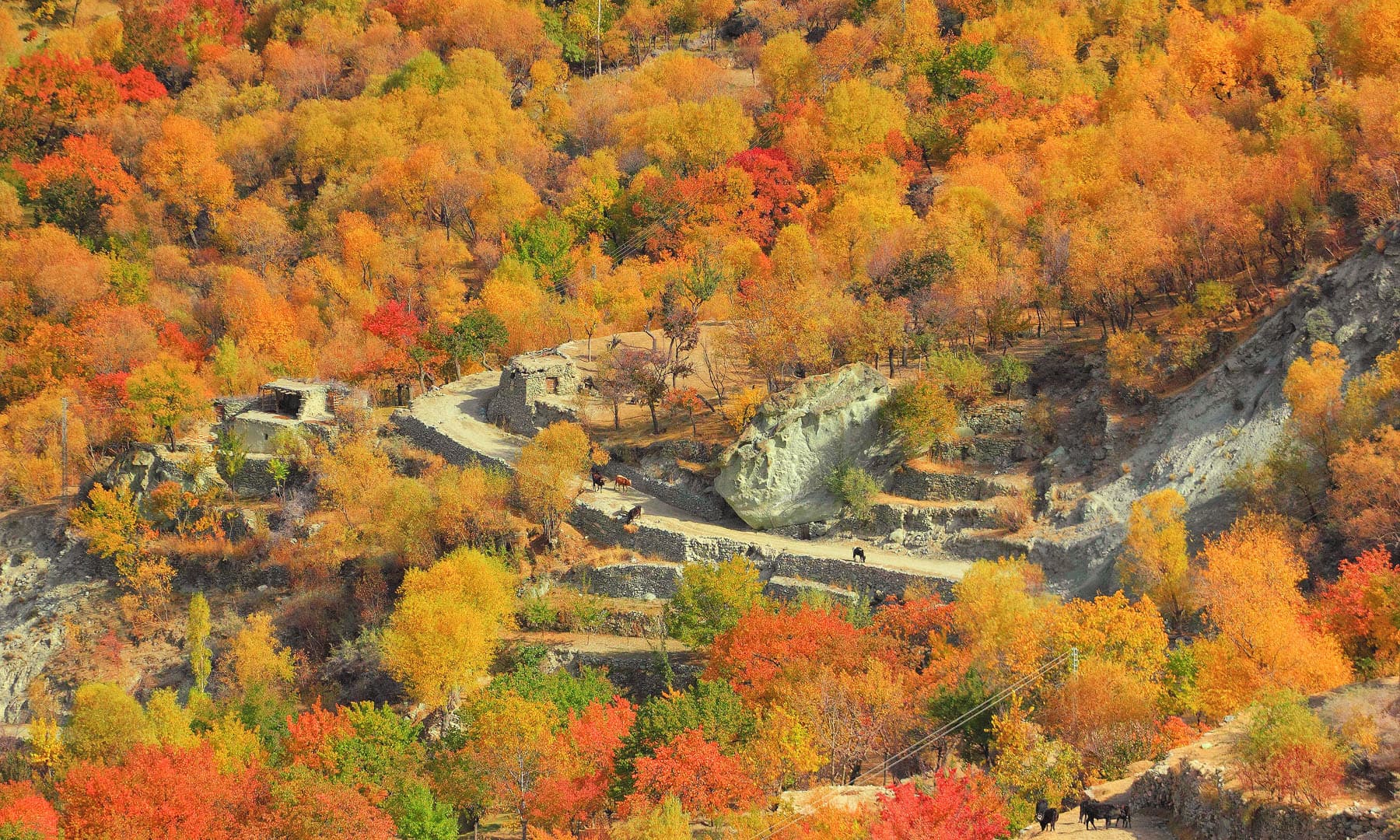
A view of Nagar Khas.
Soon power was transferred from the British to the Maharaja of Kashmir, but owing to the long distance, locals continued to live freely. Dongs, the capital of Nagar, was in Nagar Khas where royal courts and palaces of marble still exist. It remained the capital till the last royal of Maghlot Dynasty, Mir Shaukat Ali Khan, was in power.
Hooper is the most beautiful place in Nagar, a land of snow-clad mountains, but the sheer power of glaciers to carve out new landscapes makes them intricately gorgeous too. In Gulmit valley lies Rakaposhi Mountain whereas the Diran Peak stands tall in Minapin.
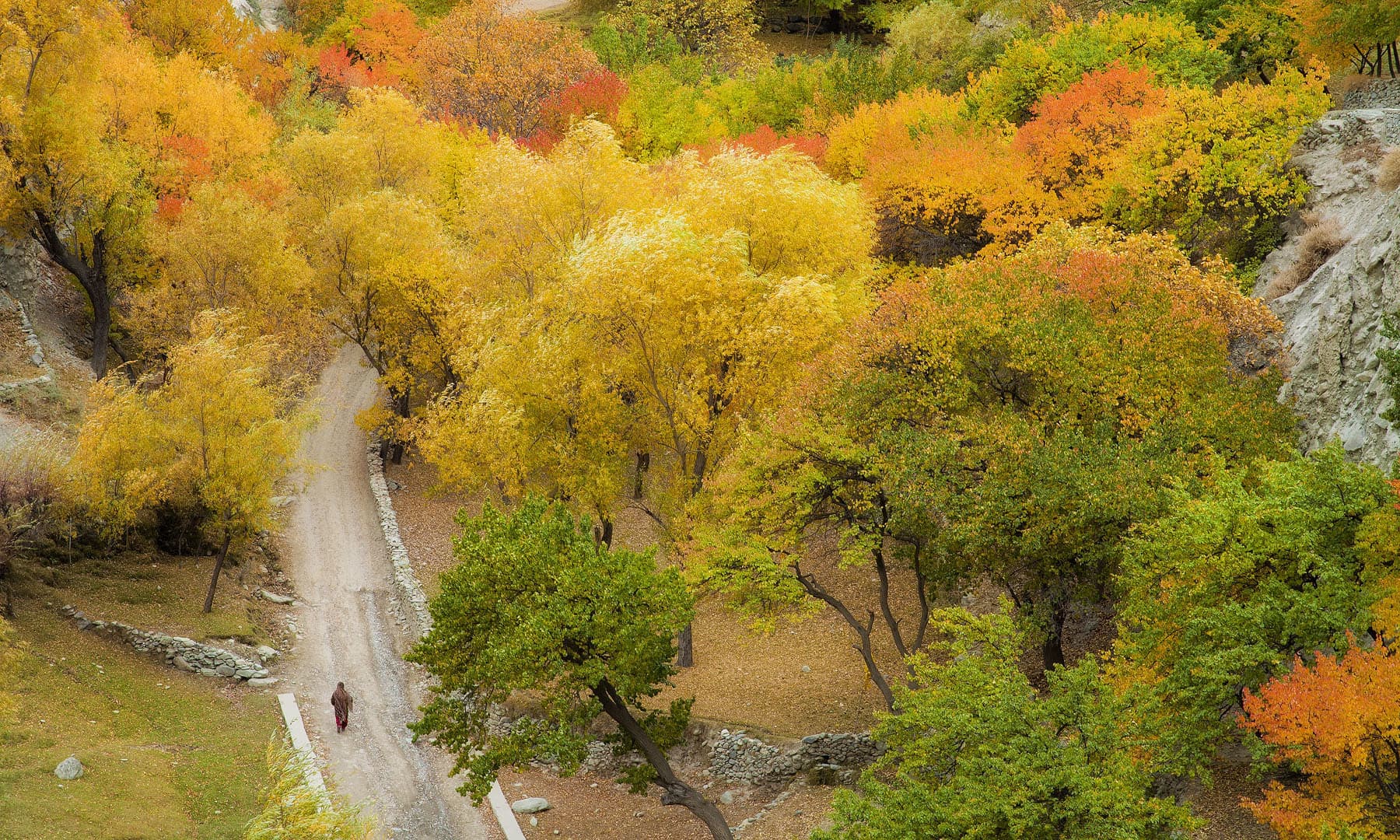
An Aerial view.

On the way to Hooper
The writer is a network engineer by profession, and a traveler, poet, photographer and writer by passion. He can be reached on Facebook.
SYED MEHDI BUKHARI

View of Nagar from Hunza at dusk.
Some things are beautiful in their simplicity; others in their intricacy.
In the north of Pakistan lies an absolutely stunning district; Hunza Nagar, previously known as Brushal, this place is a lakeside paradise. Hunza and Nagar used to be separate princely states parted by the River Hunza which marked the border between the two states.
The small states of Hunza and Nagar were notorious for looting trader caravans that would come from China.
The British wanted to expand their trade to Russia from here, but the states wouldn’t allow them to. Thus in 1891, Nagar was invaded by the British Army led by Colonel Durand. British surrounded the Nagar’s Nalt Fort, and eventually seized it six months later.

Frame from Nagar.

A pathway in Nagar.

A view of Nagar Khas.

A view of Nagar Khas.

A view of Nagar Khas.
Soon power was transferred from the British to the Maharaja of Kashmir, but owing to the long distance, locals continued to live freely. Dongs, the capital of Nagar, was in Nagar Khas where royal courts and palaces of marble still exist. It remained the capital till the last royal of Maghlot Dynasty, Mir Shaukat Ali Khan, was in power.
Hooper is the most beautiful place in Nagar, a land of snow-clad mountains, but the sheer power of glaciers to carve out new landscapes makes them intricately gorgeous too. In Gulmit valley lies Rakaposhi Mountain whereas the Diran Peak stands tall in Minapin.

An Aerial view.

On the way to Hooper
The writer is a network engineer by profession, and a traveler, poet, photographer and writer by passion. He can be reached on Facebook.
Sulman Badshah
STAFF

- Joined
- Feb 22, 2014
- Messages
- 4,282
- Reaction score
- 34
- Country
- Location
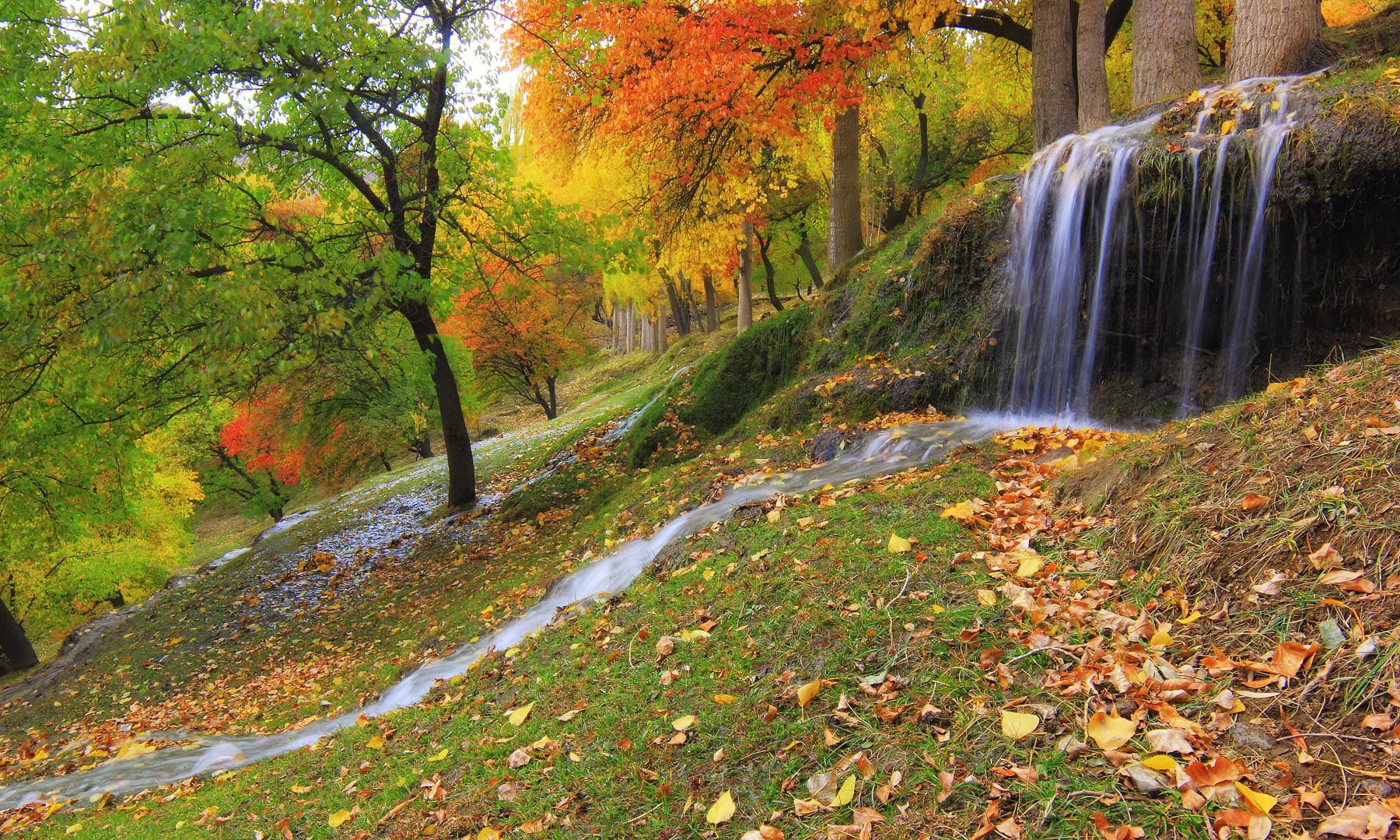
Garden on the way to Hooper.
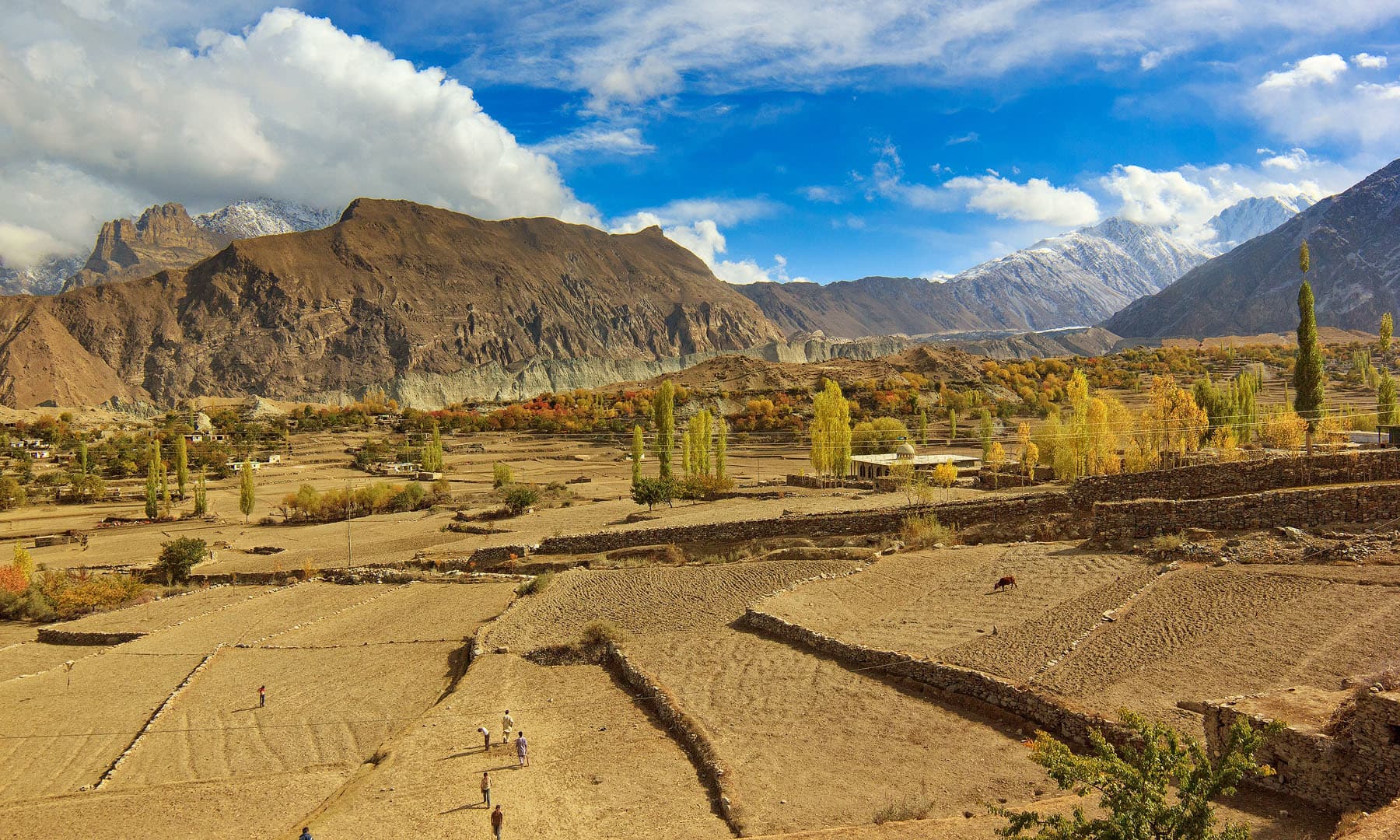
On the way to Hooper.
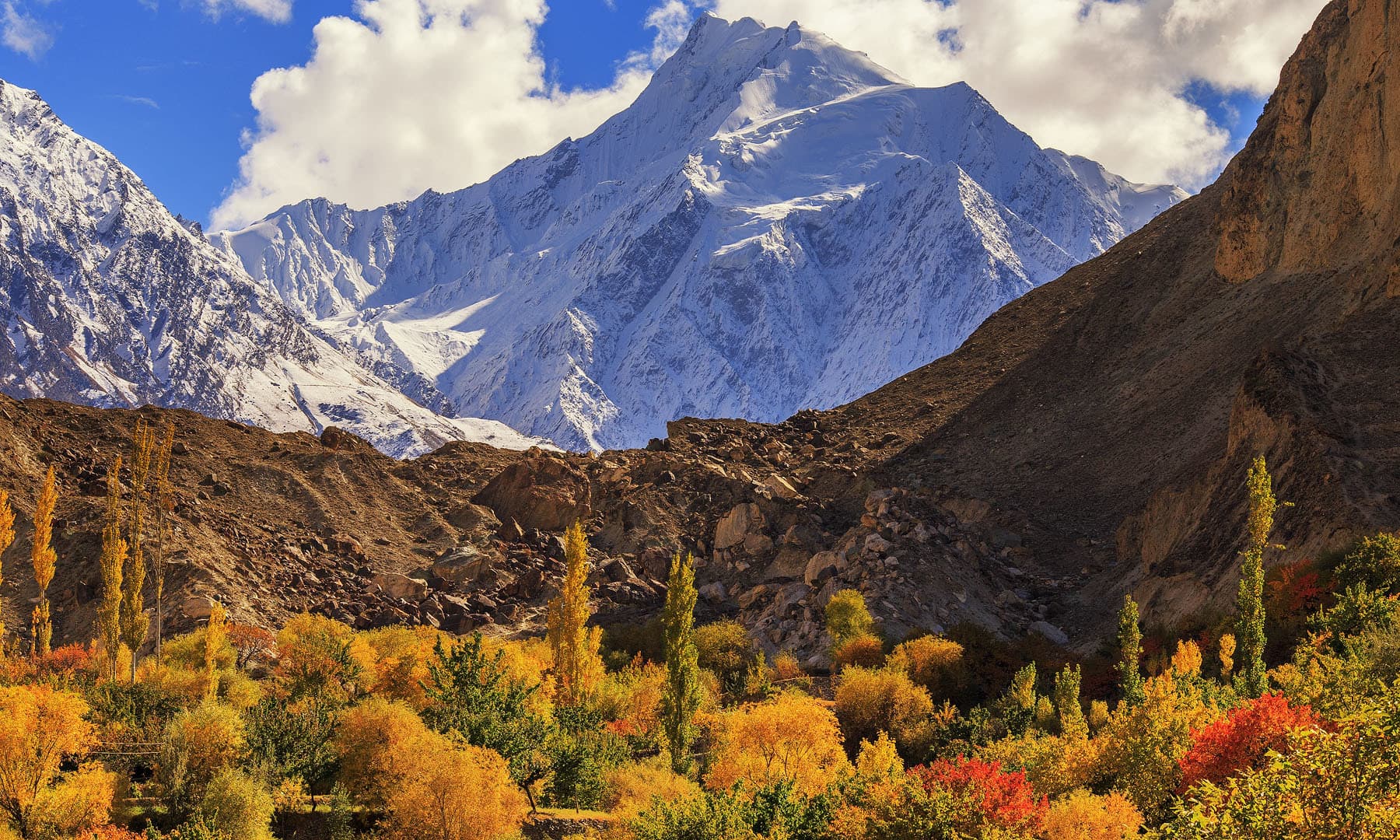
Rakaposhi view from Nagar.
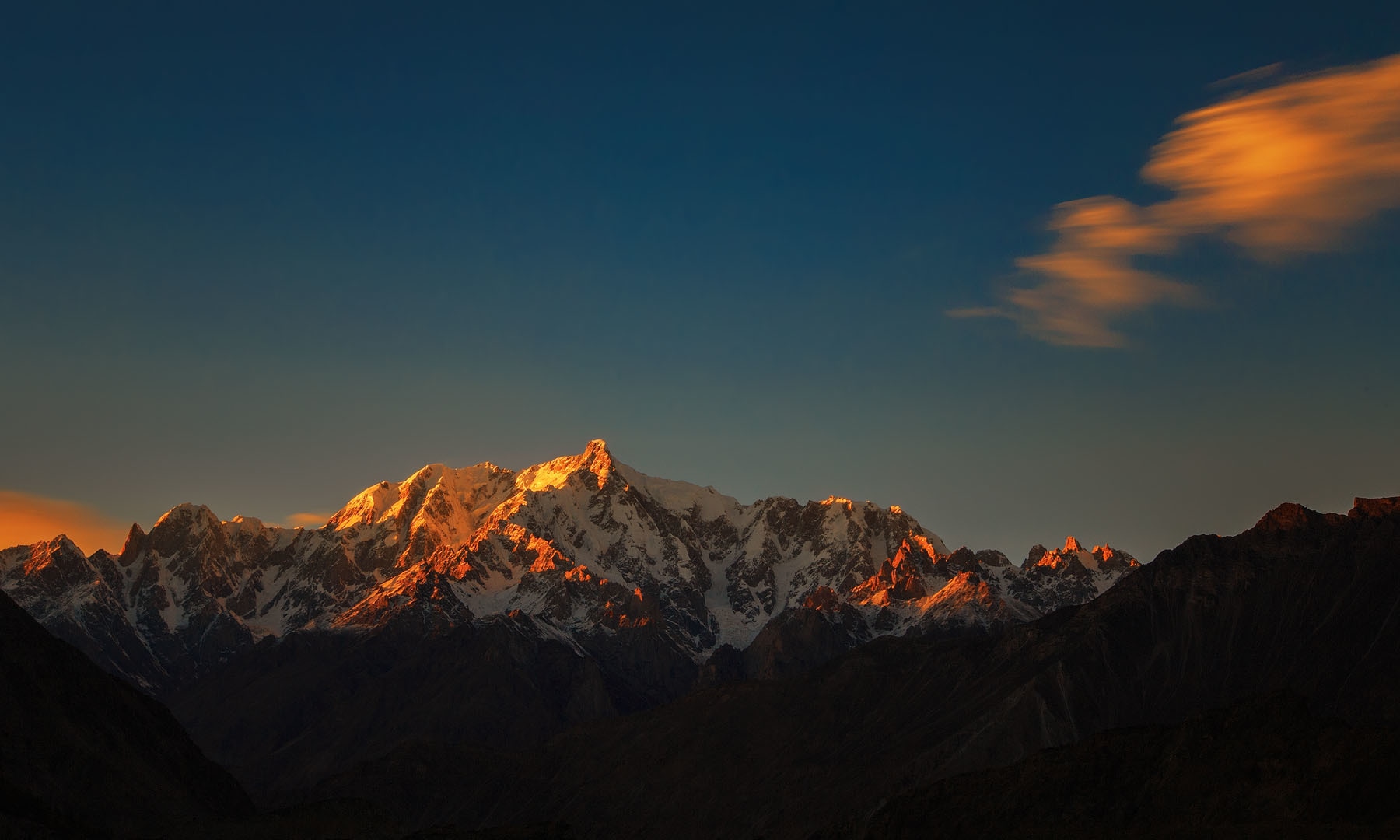
Sunset on Altar peak from Nagar.

A cattle is pictured grazing

A cattle is pictured grazing
Heading towards Hunza through the Karakoram Highway, I notice a long line of vehicles standing in queues due to a massive landslide blocking the road near Minapin. My driver takes an alternate route through the Minapin village, as I watch the stunning scenery race past. From the precariously narrow and bumpy route my driver takes, I lookout for the Karakoram Highway.
After a two-hour drive, we finally manage to get back on the Karakoram Highway. While the engine accelerates briskly on our way to Hunza, for the first time ever, I see Nagar.
Luscious green grassland with Golden Peak in the backdrop, I see happy faces peering out, local children playing, women stretching their backs into the sunshine amid work, and animals grazing fields — Nagar is known for its serene village life.
As soon as one leaves Hunza and crosses the river bridge after Ganesh village, a road turning right leads to Hooper. Before Hooper is Nagar Khas, which used to be the centre of Nagar. The area is flecked with fruit trees including cherries, apples, and apricots.
Nagar Khas is full of hard-working, soft-spoken people with small homes and shops. A road from the Nagar Khas Bazar leads to the last village of north, Hispar, and another towards Hooper, which houses glaciers and the Rush lake. There is no human settlement after Hooper.
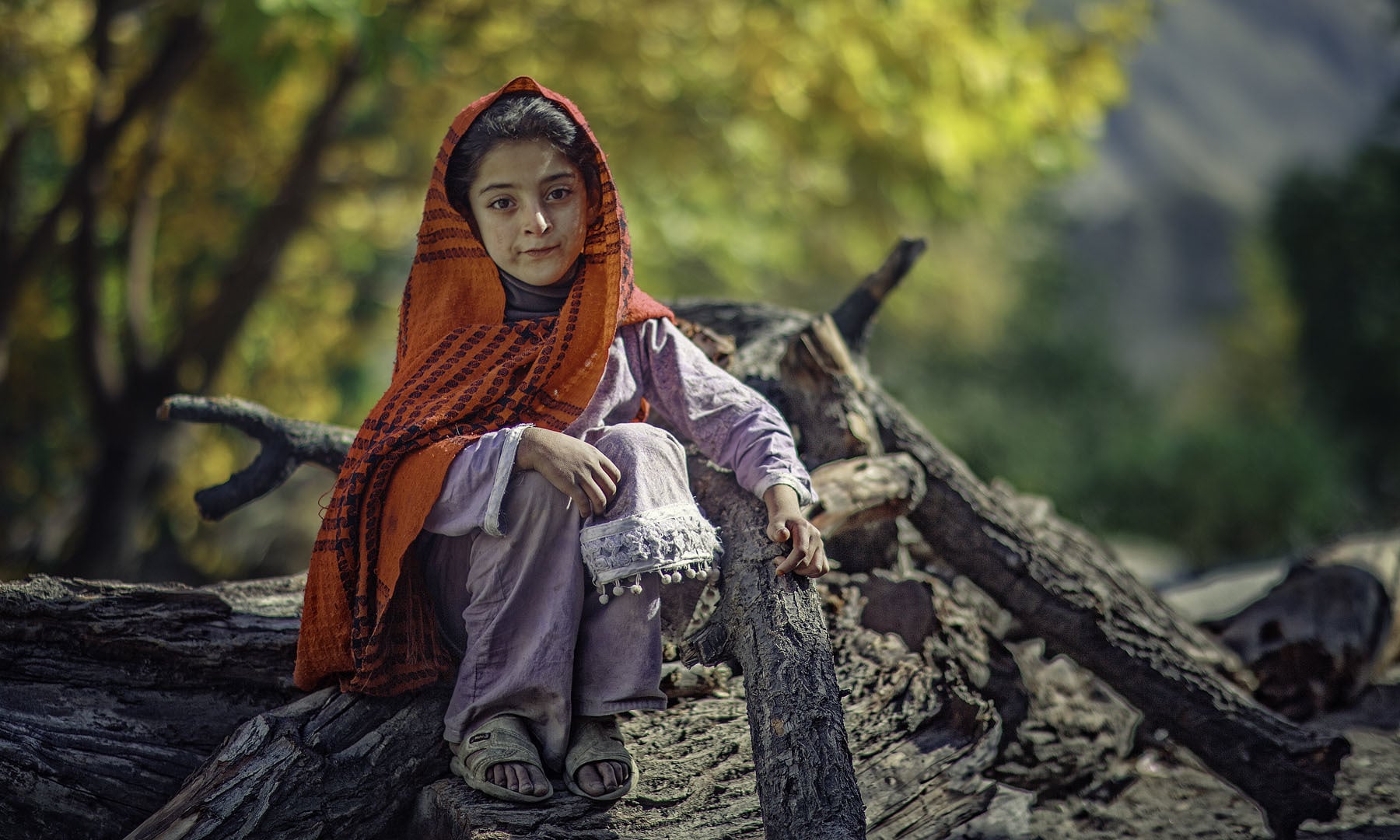
A child in Nagar.
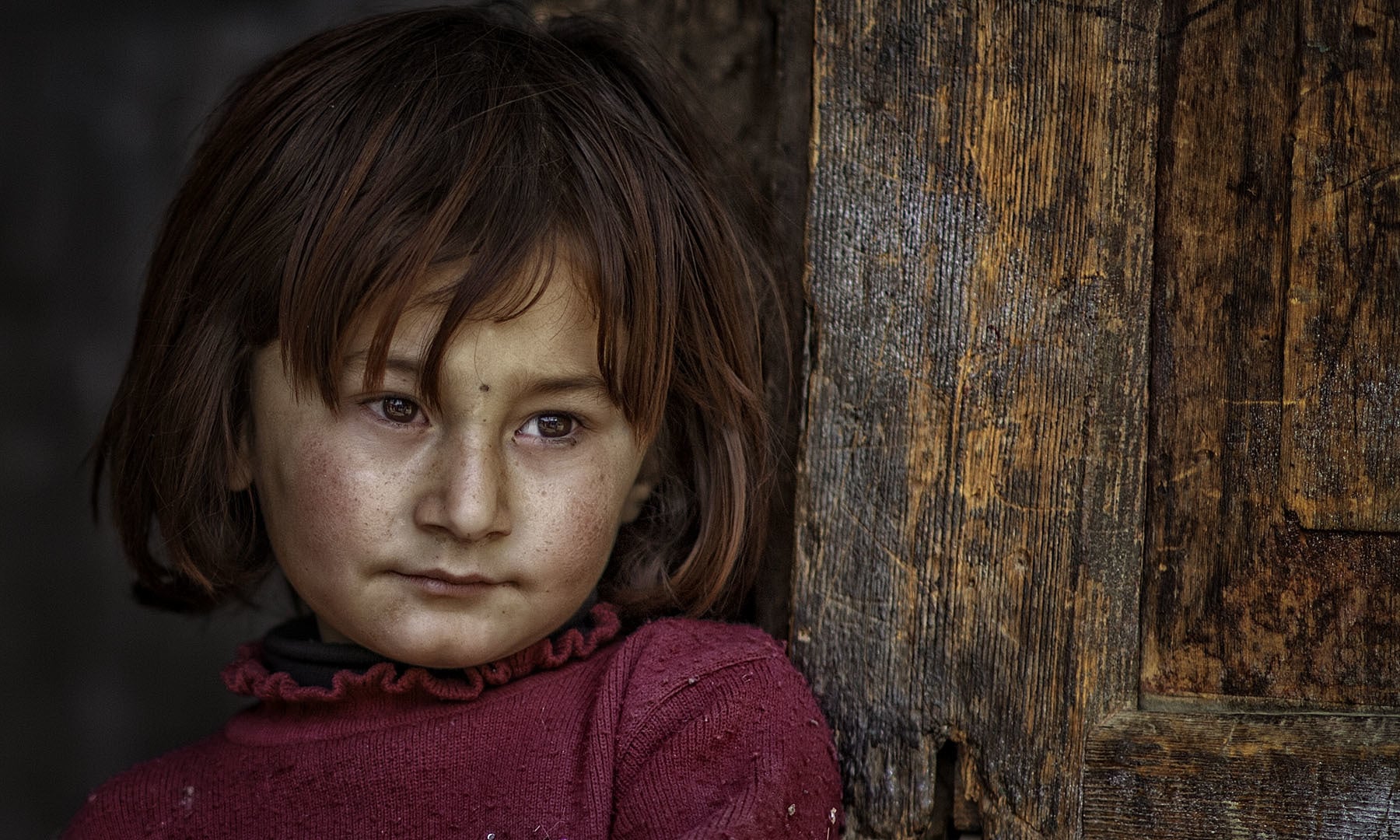
A child in Nagar.
Similar threads
- Replies
- 1
- Views
- 292
- Replies
- 0
- Views
- 302
- Replies
- 47
- Views
- 2K
- Replies
- 2
- Views
- 386






